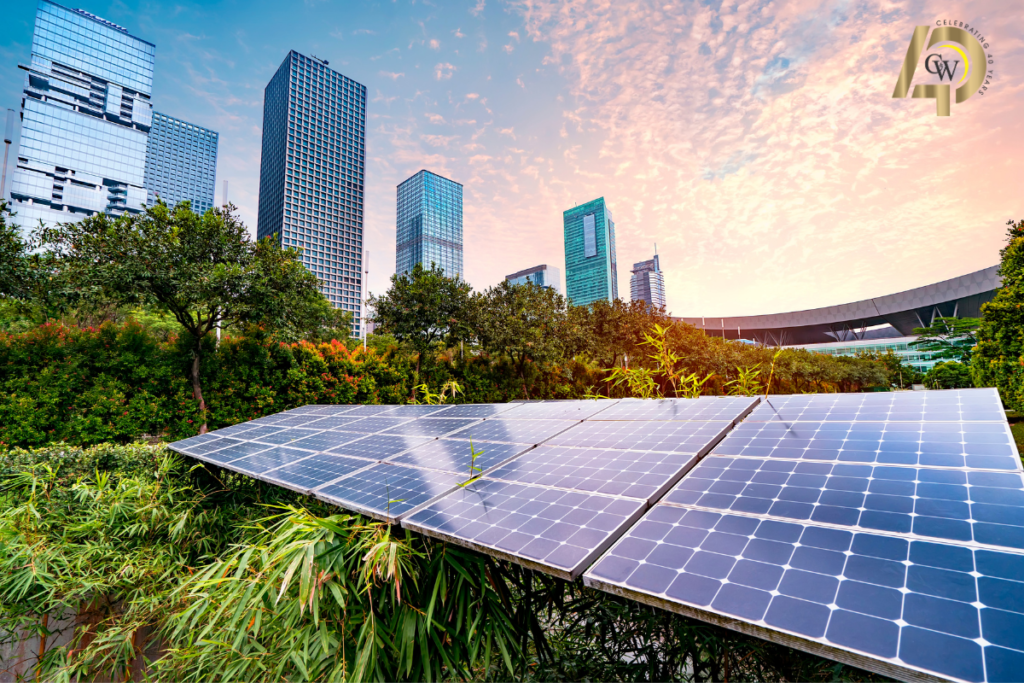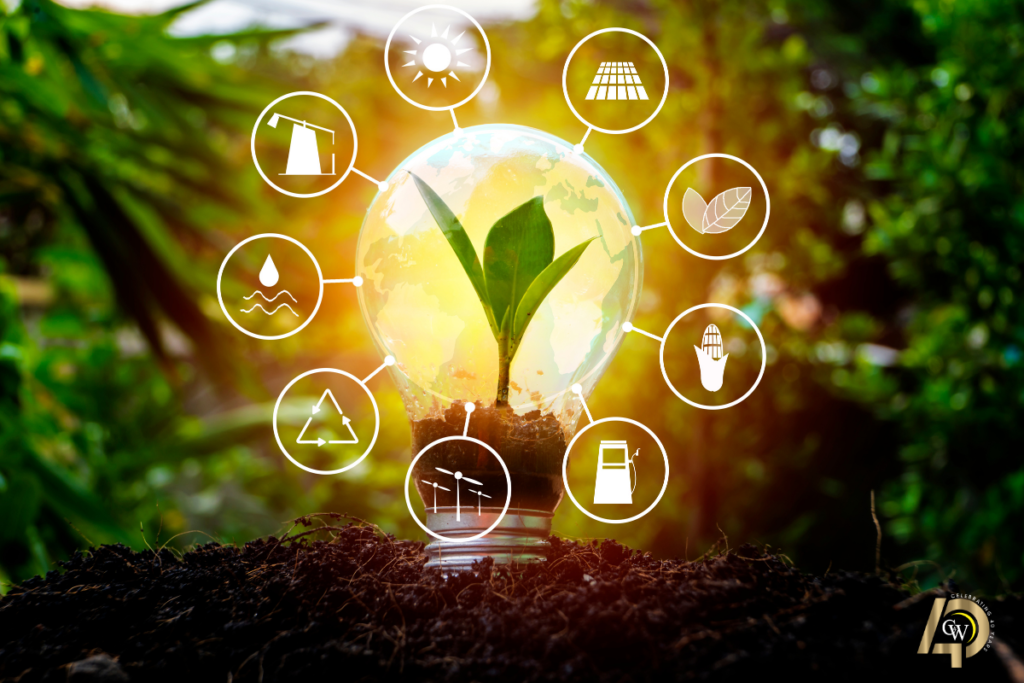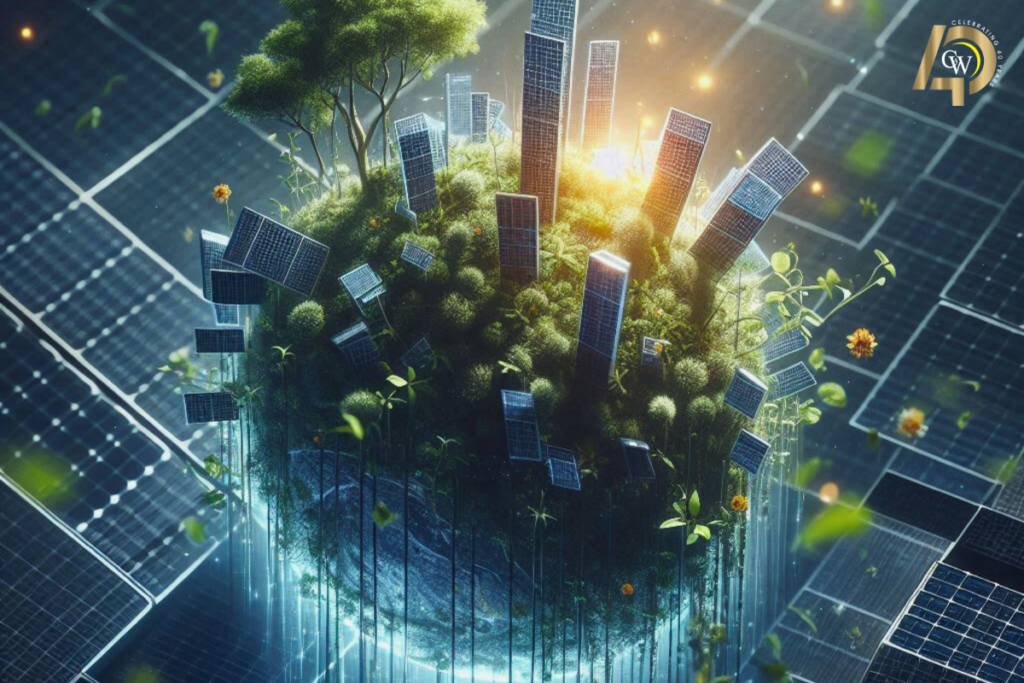How is technology helping to combat climate change? This article delves into the top five technological breakthroughs that are reducing greenhouse gas emissions and promoting sustainability in the context of technology and climate change. Discover how renewable energy, carbon capture, and other innovations are making a significant impact on our planet.
Key Takeaways
Technology plays a critical role in reducing greenhouse gas emissions, with advances in renewable energy, carbon capture, and enhanced energy efficiency being pivotal in climate change mitigation.
Innovative technologies such as AI, quantum computing, and robotics are essential in combating climate change, improving energy management, and promoting sustainable practices.
Emerging trends in clean energy production, including distributed renewable energy systems and ocean-based energy, hold significant potential for reducing reliance on fossil fuels and minimizing environmental impacts.
The Role of Technology in Reducing Greenhouse Gas Emissions
Technology significantly influences climate policy, integrating into climate plans to effectively mitigate the impacts of climate change. Proactive leadership and creative policy solutions are necessary to achieve the successful adoption of climate technology. The integration of technology into climate strategies helps prevent or reverse climate change through innovative solutions.
Technological advancements in clean energy technology are supported by significant investments to accelerate breakthroughs. Innovations in energy production, manufacturing processes, and battery storage are crucial for climate solutions. Leadership is vital for the proactive implementation of technology to tackle climate challenges.
Emerging strategies like solar radiation management and carbon dioxide removal offer engineering solutions to combat climate change, albeit with potential risks and ethical concerns that could disrupt ecosystems. Government, industry, and research sector collaboration is necessary to create economic incentives driving sustainability innovation.
Renewable Energy Solutions
Switching to renewable energy sources can substantially decrease greenhouse gas emissions, a key step in combating climate change. Key points include:
Distributed renewable energy resources, such as solar power plants and wind turbines, are becoming increasingly common.
These resources provide clean energy alternatives to burning fossil fuels and promote green energy solutions.
On-site solar generation helps residences and businesses reduce energy costs and sell excess energy, promoting sustainable development by lowering carbon footprints and energy consumption.
Carbon Capture and Storage Technologies
Direct Air Capture (DAC) extracts carbon from the atmosphere. This technology captures carbon dioxide and stores it underground or converts it into valuable products, reducing overall greenhouse gas levels. Carbon capture technology plays a crucial role in reducing emissions from industries that still rely on fossil fuels.
Advancements in carbon capture and storage technologies are crucial for clean energy goals and mitigating the climate crisis. By integrating these technologies into power plants and other industrial processes, we can significantly reduce carbon emissions and combat climate change.
Enhancing Energy Efficiency
Digitalization helps reduce greenhouse gas emissions by streamlining energy management processes through digital technologies. Technological advancements like data analytics and smart sensors enhance energy efficiency to increase efficiency by minimizing waste. New efficiency standards for utility providers and appliance manufacturers aim to reduce energy use while maintaining service performance.
AI technologies analyze energy consumption patterns, aiding in identifying and addressing inefficiencies. Research into methane emissions aims to develop technologies for better detection and measurement, contributing to efficiency and reduction goals.
Innovative Technologies Combatting Climate Change
Innovative technologies play a crucial role in addressing climate change and improving environmental impact. Researchers are developing new technologies to:
Identify emissions and improve energy efficiency
Use solar geoengineering to reflect solar energy back into space to mitigate global warming
Help coral reefs threatened by ocean warming through methods such as pumping cooler water from deeper ocean and shading structures to address climate change. Additionally, climate technologies are being explored to further enhance these efforts.
These technologies offer promising solutions to combat climate change and reduce greenhouse gas emissions. Advancements in technology development, artificial intelligence, quantum computing, and robotics can enhance our ability to address the climate crisis and promote sustainable development.
Artificial Intelligence and Machine Learning
AI enhances climate modeling by analyzing vast datasets to predict patterns and impacts, optimizing energy usage by reducing waste, improving efficiency, and predicting demand. Emerging technologies are critical for identifying emissions and improving energy efficiency through innovative approaches.
The computational power of AI and machine learning enables the development of more accurate climate models and optimized energy systems to reduce greenhouse gas emissions. These technologies play a vital role in combatting climate change and promoting sustainable development.
Quantum Computing for Climate Solutions
Quantum computing relies on principles of quantum physics to perform computations. The Willow quantum chip, which has 105 qubits, represents a significant advancement in quantum computing. This chip has been able to solve problems in under five minutes, showcasing its immense computational power. Quantum computers provide an exponential boost in computational power compared to classical computers.
Quantum computing speeds up the development of efficient materials for carbon capture technologies. Such advancements in computational power can revolutionize energy storage solutions, optimizing battery materials and design, ultimately contributing to clean energy production and reducing greenhouse gas emissions.
Robotics in Environmental Conservation
Drones and autonomous robots assist in installing and maintaining solar panels and wind turbines. Maximo accelerates solar farm construction and eases the burden on human workers. The design and use of machines to perform tasks typically done by humans offer significant benefits in terms of efficiency and precision.
Robots aid in search and rescue operations and environmental cleanup. By leveraging robotics in environmental conservation, we can enhance our ability to combat climate change and promote sustainable development through innovative technologies, as they play a key role in these efforts.
Emerging Trends in Clean Energy Production
Batteries and energy storage are critical areas of research in climate technology, directly impacting clean energy production. Improving battery capacity is essential for storing excess energy generated by intermittent renewable sources such as solar and wind. Quantum computing can revolutionize energy storage solutions by optimizing battery materials and design.
Emerging trends in clean energy production aim to enhance the efficiency and reliability of renewable energy sources. Advanced energy storage solutions ensure a consistent supply of clean energy, reducing reliance on fossil fuels.
Distributed Renewable Energy Systems
Distributed renewable energy resources like solar power plants and wind turbines are increasingly common, though they may lead to higher utility bills due to implementation and maintenance costs. However, on-site solar generation offers residences and businesses benefits by reducing energy costs and allowing them to sell excess energy.
These systems promote sustainable development by reducing carbon footprints and offering clean energy alternatives to fossil fuels. By leveraging distributed renewable energy systems, we can meet growing energy demand while minimizing environmental impact and help to produce energy.
Ocean-Based Renewable Energy
Ocean-based renewable energy holds vast potential for clean energy production. Wave energy converters have the potential to harvest 29,500 terawatt-hours of renewable electricity annually. This indicates a significant opportunity for renewable energy generation. CorPower Ocean tested a new commercial-scale wave energy generator in Portugal, showcasing the potential of wave energy technology.
Tidal energy projects, such as the planned generator in Liverpool, could power homes for 120 years or longer. Researchers are also testing turbines to capture energy from the Gulf Stream 80 feet below the ocean’s surface.
Innovative ocean-based renewable energy technologies can significantly reduce greenhouse gas emissions and combat climate change.
Space-Based Solar Power
Space-based solar power provides a consistent renewable energy source. However, challenges include high launch costs, potential environmental impacts, and risks associated with beam misdirection. Despite these challenges, space-based solar power holds promise for providing vast amounts of clean energy to meet global energy demand.
Harnessing solar radiation from space allows for continuous energy production, regardless of weather conditions or time of day, potentially revolutionizing clean energy production and reducing reliance on fossil fuels.
Technological Innovations for Sustainable Development
Technological innovations are crucial for promoting sustainable development and reducing environmental impact. Regenerative agriculture restores degraded soils by enhancing their organic carbon content, helping mitigate climate change and promoting biodiversity and food security.
Robotic systems are increasingly utilized in reforestation efforts, planting trees efficiently in deforested areas. These technological innovations contribute significantly to sustainable development and help mitigate the effects of climate change.
Smart Cities and Infrastructure
Smart city technologies use sensors and data analytics to optimize resource use and reduce emissions. The Internet of Things (IoT) enhances efficiency, reduces energy consumption, and lowers greenhouse gas emissions through interconnected systems.
The deployment of 5G technology is essential for smart cities, as it improves connectivity and supports a larger number of devices, facilitating better resource management. These advanced systems improve urban sustainability by optimizing resource use and promoting clean energy.
Advanced Materials and Construction Techniques
Innovative construction materials, like transparent wood, significantly enhance building efficiency and sustainability. These materials improve energy efficiency in buildings while offering an environmentally friendly alternative to traditional materials.
Sustainable construction practices focus on minimizing waste and utilizing renewable resources, which can significantly decrease the carbon footprint of new developments. By adopting advanced materials and construction techniques, we can promote sustainable development and reduce greenhouse gas emissions.
Circular Economy and Waste Reduction
Technologies designed for a circular economy aim to repurpose waste materials, thus reducing environmental impact and conserving resources in production processes. For instance, AI can assist in waste management by identifying recyclable materials and reducing landfill waste. This not only helps in reducing emissions but also promotes sustainable development.
Moreover, alternatives to traditional packaging materials, such as mushroom-based and organic plant waste materials, are being developed to replace Styrofoam peanuts. These innovations are crucial in achieving a circular economy, reducing greenhouse gas emissions from landfill waste, and promoting efficient resource use.
Addressing Methane Emissions with Technology
Methane is a potent greenhouse gas with a significant impact on climate change. Advanced sensing technology enables the detection of methane emissions with unprecedented accuracy and resolution. The Methane Mitigation Technologies program aims to eliminate methane emissions from the oil and gas supply chain by 2030.
Innovative technologies are being developed to identify and mitigate emissions from various sources more effectively. By addressing methane emissions, we can significantly reduce our overall greenhouse gas emissions and combat climate change.
Satellite Imagery and AI Tools
Satellite technology allows for real-time monitoring of methane emissions from varied global sources. MethaneSAT, launched by the Environmental Defense Fund, is a new technology that tracks methane emissions. MethaneSAT’s data will be available for free, promoting transparency in monitoring methane emissions.
Tracking methane emissions from global supply chains is critical for ensuring compliance with environmental regulations. By leveraging satellite imagery and AI tools, we can enhance our ability to monitor and reduce methane emissions effectively.
Innovations in Methane Capture
New technologies are being developed to effectively capture methane from agricultural and industrial activities. Modular technologies are being developed to convert stranded natural gas into higher-value solid and liquid products. These innovations in methane capture technologies are crucial for mitigating emissions from various industrial and agricultural activities.
By implementing these methane capture technologies, we can significantly reduce methane emissions and contribute to sustainability efforts. These advancements are essential for combatting climate change and promoting clean energy.
Regenerative Technologies to Reverse Climate Damage
Regenerative technologies focus on reversing existing environmental damage and regenerating natural resources. Regenerative agriculture practices actively reduce atmospheric carbon levels and promote soil health. These practices are vital for healing the earth and increasing carbon sequestration.
Private equity firms are investing in regenerative agriculture ventures to support sustainable practices. Adopting regenerative technologies can reverse climate damage and promote sustainable development.
Biochar and Soil Restoration
Biochar helps sequester carbon and improve soil health in several ways:
Provides a stable form of carbon retained in soil
Enhances soil’s ability to retain nutrients and moisture
Increases soil fertility
Improves soil’s capability to absorb greenhouse gas emissions
Selling biochar carbon credits to corporations presents market opportunities for producers. Leveraging biochar and soil restoration technologies can reduce carbon footprints and promote sustainable agriculture.
3D-Printed Coral Reefs
The 3D-printed coral reefs project aims to create artificial reefs supporting new marine ecosystems. These reefs are designed to mimic natural reefs and can be created at depths of 60 to 90 feet. The structures help combat the effects of ocean warming and promote biodiversity, thus playing a crucial role in restoring marine ecosystems.
Adopting 3D-printed coral reefs can mitigate the impacts of rising sea levels and promote marine biodiversity. These innovative technologies are essential for reversing environmental damage and preventing further damage while supporting sustainable development.
Carbon Capture Utilization
Direct air capture technology removes CO2 from ambient air. Carbon capture utilization refers to the technology and processes that convert captured carbon dioxide into useful products, which can mitigate climate change impacts.
Captured CO2 can be converted into various products, contributing to a circular economy and reducing overall atmospheric CO2 levels. Carbon capture utilization has the potential to significantly aid in climate change mitigation by converting waste CO2 into valuable resources.
Summary
The advancements in technology discussed in this blog post are transforming our approach to combatting climate change. From renewable energy solutions and carbon capture technologies to innovative trends in clean energy production and regenerative practices, these breakthroughs offer promising solutions to reduce greenhouse gas emissions and promote sustainable development.
By embracing these technological innovations, we can make significant strides in addressing the climate crisis and ensuring a greener, more resilient world. The future of our planet depends on our ability to leverage these emerging technologies and take decisive climate action.
Who is C&W Technologies?
C&W Technologies is a leading provider of IT and communication solutions for businesses. Founded in 1985, our company has over 40 years of experience in the industry, and we serve clients across a wide range of industries.
Our company prides itself on its commitment to customer satisfaction and continuously strives to deliver cutting-edge technology solutions that meet the evolving needs of businesses. With a team of highly skilled professionals and strategic partnerships with top technology providers, C&W Technologies is able to deliver reliable and efficient technology solutions that drive business growth.
Contact Us Today!
If you’re interested in learning more about our services, how we can help your business grow, or want to learn more about our sercurity services, please don’t hesitate to contact us. Our team at C&W Technologies is dedicated to providing top-quality technology solutions and exceptional customer service. We would be happy to discuss your specific needs and tailor a solution that fits your business goals.
Frequently Asked Questions
How do renewable energy solutions help in reducing greenhouse gas emissions?
Renewable energy solutions like solar panels and wind turbines are crucial in reducing greenhouse gas emissions by offering clean alternatives to fossil fuels. This transition plays a vital role in combatting climate change and promoting a sustainable future.
What is Direct Air Capture (DAC) technology?
Direct Air Capture (DAC) technology effectively removes carbon dioxide from the atmosphere, enabling its storage or conversion into useful products, thus helping to lower greenhouse gas emissions. This method plays a crucial role in climate change mitigation.
How does artificial intelligence contribute to combatting climate change?
Artificial intelligence significantly contributes to combatting climate change by enhancing climate modeling through data analysis and optimizing energy usage to reduce waste and improve efficiency. These advancements play a crucial role in developing effective strategies to mitigate climate impacts.
What are the benefits of ocean-based renewable energy?
Ocean-based renewable energy is vital for producing clean energy and significantly reduces greenhouse gas emissions, helping to combat climate change effectively. Its vast potential positions it as a crucial solution for sustainable energy futures.
How does biochar help in soil restoration and climate mitigation?
Biochar effectively restores soil by sequestering carbon and enhancing its nutrient and moisture retention, which reduces greenhouse gas emissions. This dual benefit makes biochar a valuable tool for sustainable agriculture and climate mitigation.





